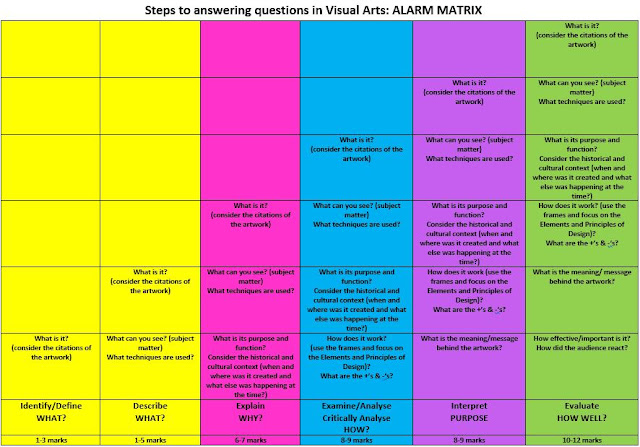Inspirations for teaching
I'm always on Facebook and Instagram but for the right reasons. I love looking at what other teachers are doing. They become my source of inspiration. The purpose of my blog is to reflect on my own teaching practice and to share resources. Some ideas of mine are original and others have been borrowed or modified to suit my own classroom.
There is so much to learn from one another. I'll use my lesson from today as an example of how I used what I learnt from social media.
Year 11 (Senior students) Visual Arts:
FIRST INSPIRATION
I joined the 'High School TAB' American Facebook page recently (just yesterday) and even though the system in America is different to Australia, I was still able to get A LOT of ideas! First, I found a blog post about 'Creating a High School Schedule and Culture in My TAB Classroom'. The teacher shared her methods of organising her lesson structures in advance.
I was interested in how she experiments with assessment to help push students to a higher standard. I have changed her rubric to an informal self-assessment that students need to fill in. I also changed the information on the far left. This came at a perfect timing as I wanted students to MOVE from developing their concepts to MAKING their artworks. They have been forever stuck in the 'thinking' stage for 6 weeks out of their 18 weeks 'Portraits' project. I gave students the instruction to tick and grade themselves out of 10.
My handwritten copy is a bit blurry. The first column states:
Visual Arts Process Diary
-Show evidence of brainstorming.
-Visual inspiration.
Visual Arts Process Diary
-4 Sketches (show layout options, expectations and colour scheme).
Artwork #1
Artwork #2
Artwork #3
Artwork #4
Students were asked to tick whether they have:
-Exceeding expectation
-Meet expectation
-Missing elements
-Does not meet requirement
I must send warning letters home IF students do not move themselves from 'missing elements' and 'does not meet requirement' to 'meeting expectation'. This is their wake-up call!
I was happy that students took the task seriously and was honest with how they were going. Sometimes, it is hard for students to hear it from the teacher. Instead, when they reflect on themselves they can see the 'truth' and then make the right choices.
SECOND INSPIRATION
A lot times art teachers like to share examples of students work and ask for feedback. You can find this on several Art teacher Facebook group pages. This is because they want a set of new 'lens' to look at something. It is also great to bounce off ideas between teachers. I created a lesson based on an artwork by an unknown student in America. I gave the student a 'fake profile'. I told students that Susan is a classmate who is planning to submit a Portrait artwork. I asked my students to act as a good friend and an honest classmate when giving feedback to Susan. I asked for positive feedback and for helpful suggestions.
This forces the students to see how hard it is to provide art critique (without the other person taking it personally). At the same time understand why it is valuable to hear the 'truth'. With the fake student, a few examples of room for improvement includes providing tones, avoiding obvious portrayal of a concept, considering the use of space and how craftsmanship can affect the way an audience interprets an artwork. This activity also forces students to consider how they can avoid making the same mistakes.
For my next lesson, I plan to show a BEFORE and AFTER artwork influenced by feedback. This activity looks at how feedback can be used constructively to improve on an artwork. However, I will be making it clear that the end decision is still with the artist. I always stress that if I must make a concept for a student, and they create the artwork under my instructions then they are no different to the 'workers' which Jeff Koons employs.
THIRD INSPIRATION
I found this idea on Instagram a while back. The only resource you need are paddle pop sticks. I purchased a packet from Reject Shop for $2.50. All you have to do is write your student's name on the paddle pop sticks. Since I have five classes (not counting my Technology Mandatory and one period of Geography), I also write down the class name on the other end. Every time I have class discussion or I want to pick out students for an activity, I draw out a name. This forces students to be alert and to contribute. It also makes it fair since it is up to destiny!
Today, I used the paddle pop sticks method to get my Year 11 students to share their feedback. Susan is now going to take the feedback in so she can improve on her art making skills.





Comments
Post a Comment